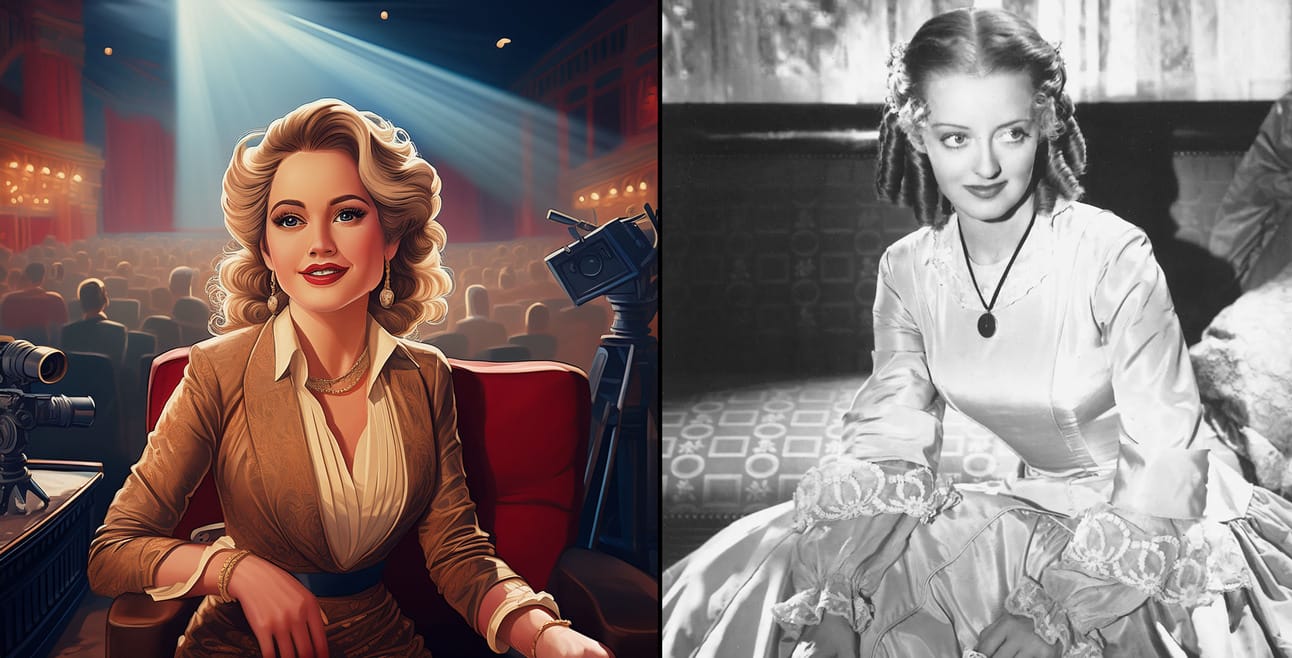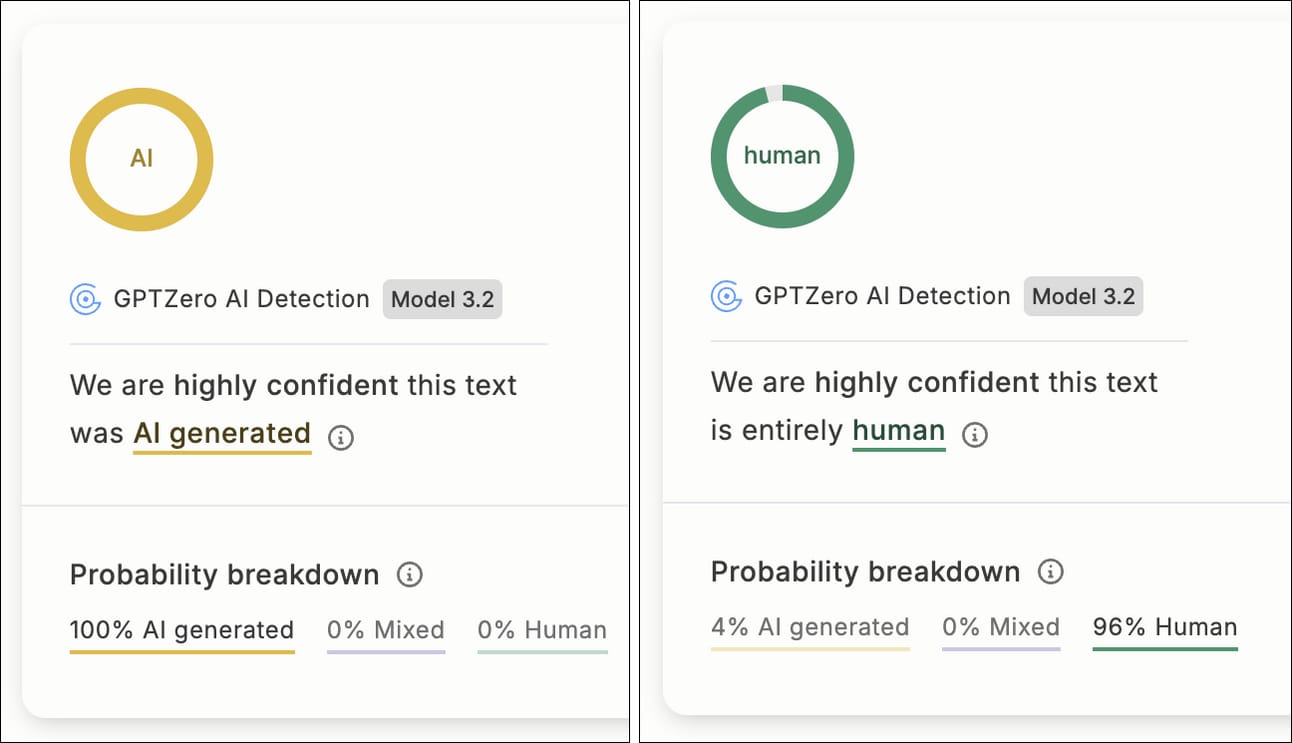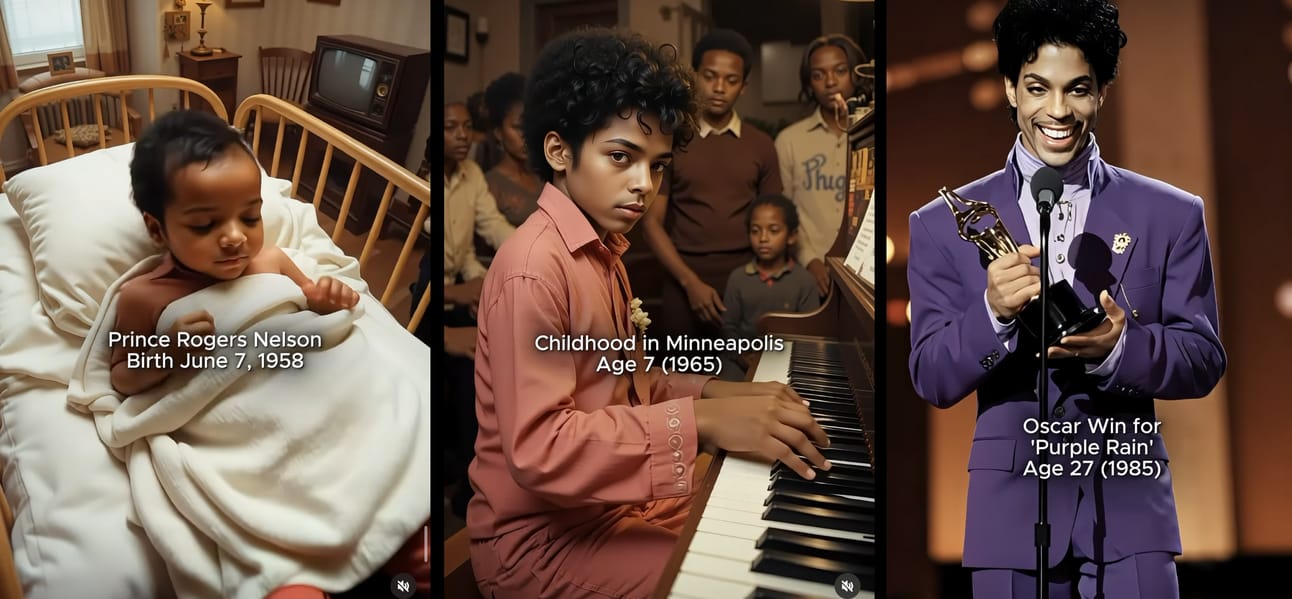- dots & dashes
- Posts
- How to spot (bad) AI
How to spot (bad) AI
From robotic rhythms to wonky words, the uncanny valley of AI-generated content still leaves clues.
It starts with a random mispronunciation. Then another. Then something you know to be factually incorrect is spoken. You notice the cadence of the narrator sounds off. Not quite human. Then you realize the video you have been watching has been fabricated by AI. Possibly no human touch whatsoever.
As AI technology advances so do the nuances to keep an eye out for that distinguish content created by humans from that originated by computers.
Overly smooth faces and skin are now a giveaway of AI video content. But so are fluid movements that don’t mimic the idiosyncrasies of how humans move. Once robotic-sounding text-to-audio narration has improved to sound more natural than ever. However, keep an ear out for sentences articulated with the same rises, falls, and emphases in each sentence. Lack of emotional inflection or very abbreviated pauses between thoughts can also be telltale signs. Another issue I’ve noticed testing technologies for d&d is that formal or uncommon names are sometimes pronounced or transcribed in several ways within the same content, only one of which is correct. An AI narrator sharply pronouncing Bette Davis’ first name as “BET” still haunts me. I was learning from a video until I realized the person speaking wasn’t a person at all. And everything I just watched came into question.
Some AI video and image generators continue to struggle with distorted hands and fingers and text that looks like gibberish. Faces and body parts in images that depict crowds are often rendered in such abstract iterations that Picasso would be intrigued. The hallmark of AI art is the sometimes otherwordly but now familiar color palate of thick lines and oversaturated colors.

“Bette Davis sitting in a movie theater” generated by Adobe Express; Bette Davis in Jezebel (1938) [Warner Brothers]
All of these markers might seem innocuous compared to deepfakes created to fool the general public or to spread misinformation. But sometimes, the smaller, less insidious content presented as fact spreads just as easily and deceives many more people. Misinformation isn’t just about the big, blatant lies. It’s a spectrum, and the little things add up to wide swaths of misinformation. Journalists have been and always will be integral to a functioning society. The need for real humans to decipher real information is more important than ever.

“Ummm…” AI
Uses of AI in media that raise ethical questions
For a while now, generating entire essays and other forms of writing that take a bit of elbow grease has been a click away thanks to AI. As these digital shortcuts have grown in popularity, so has the use of tools for detecting AI writing being passed off as original. These platforms calculate the percentage of the text with the hallmarks of AI and highlight the specific passages or sentences. Now, technology has been created to counteract the technology. As a response to these detectors, AI humanizers have grown in popularity. Just submit your text originated with AI and with a few clicks, it will tweak it so it will bypass AI detection. With a few clicks, suddenly the work of content-generating bots is nearly imperceptible. Except some of the detectors are now detecting the humanizers and… it’s a race to the top (bottom?).

Results of an AI-generated essay pasted into GPTZero, run through Writesonic, and the results entered into GPTZero.

O.M.G. AI
Mind-bending uses of AI not usually appropriate for journalism but are nonetheless thought-provoking
Have you ever felt deeply uncomfortable watching someone else’s life flash before your eyes? A new trend in AI-made videos is celebrities morphing from babies to various stages of their careers. Here’s Prince evolving from baby genius to music icon. Or check out Jim Carrey from crib to comedy legend. Or Beyoncé morphing from young vocalist to Grammy record breaker.
When I first saw one of these videos, my first thought was “Well, that’s cool.” A subsequent rush of thoughts quickly followed (as clearly tends to happen with me and AI): “Is that really how they looked as a kid? Where did these photos come from? Is AI straight up imagining what they looked like at that age?” After some investigative scrolling, the answer to the last question became clear: yes. In some to all of the cases, AI created baby celebrities with a prompt and some pixels. The videos were no less entertaining, but I did watch them with a sense of unease. With that in mind, if you want to create morphing AI images yourself, check out Pika which does a pretty good job of it. Be sure to use these tools responsibly and very thoughtfully. And remember to label your use of AI.

"Prince: From Prodigy to Legend" by @pastfusionai on Instagram

Enjoying dots & dashes? Share with a colleague or friend! Have feedback or questions? Email me at [email protected].